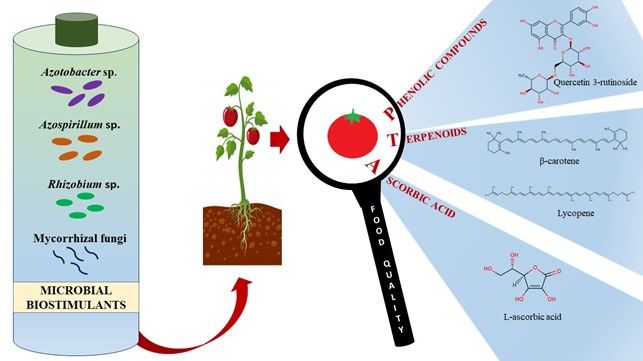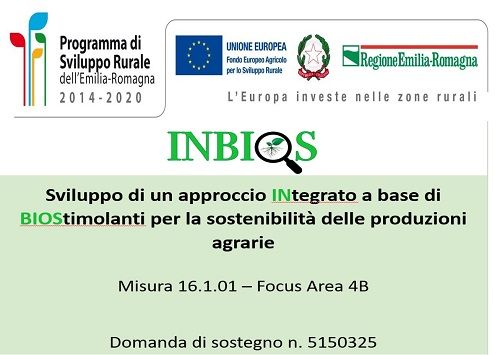Could microbial biostimulants improve food functional quality?
By: Paola Ganugi, Erika Martinelli, Luigi Lucini
Department for Sustainable Food Process, Università Cattolica del Sacro Cuore, Piacenza, Italy
*Correspondence: luigi.lucini@unicatt.it

Microbial biostimulants are designed by the recent EU Regulation 2019/1009 and involve non-pathogenic and non-toxigenic microorganisms, such as Azotobacter spp., Rhizobium spp., Azospirillum spp. and mycorrhizal fungi. Generally, they represent a green approach to improve plant and rhizosphere characteristics, including abiotic/biotic stress resistance, qualitative traits and soil nutrients content availability. This could be translated in a sustainable approach aimed at minimizing agrochemical applications and promoting environmental sustainability.
However, despite the scanty information availability, an additional interest in microbial biostimulants use is increasing because of their potential role in food functional quality mitigating. Plant-beneficial microorganisms symbiosis have shown a better performance to cope with environmental stress (drought, salinity) and pathogen attacks, principally linked to the accumulation of defense-related secondary metabolites. These metabolites reflect are also health-promoting compounds which have a functional role in human nutrition, improving some organoleptic characteristics (aroma, color) and nutraceutical value.
Thus, the concept of microbial biostimulants activity should not be limited to plant-soil scope but should be also extended to the production of human health and active aging-promoting foods.

Which are these health-promoting compounds?
Most of these metabolites, having a functional activity both in plant and in food quality, are represented by phenolic compounds, terpenoids and ascorbic acids, and many recent works have highlighted higher concentrations of these compounds following the microbial biostimulants treatment.
Phenolic compounds are usually related to defense responses in the plant, against herbivores, as well as bacteria and fungi. Nevertheless, they have involved in conferring flower/fruit pigmentation and decreasing the risk of cardiovascular and cancer diseases, thanks to their antioxidant and antiproliferative properties. Higher level of phenolic compounds has been elicited by microbial treatments. Arbuscular mycorrhizal fungi (AMF), Pseudomonas sp. strains, Azospirillum brasilenese and Rhizobium sp. PEPV16, individually or coupled inoculated, have shown higher levels of phenolic content in many fruits and vegetables, such as tomato, saffron, rosemary, thyme and strawberry. In particular, among phenolic compounds, higher amounts of anthocyanidins, p-coumaric, ferulic acid, asiatic acid, carnosol, vanillin, protocatechuic, rosmarinic acids, apigenin, kaempferol, quercetin and luteolin have been found.
Regarding terpenoids, these compounds play a key role in plant defense against biotic and abiotic stresses. However, carotenoids –belonging to terpenoid class- have been proved to prevent cardiovascular diseases, cancers, diabetes and Alzheimer’s, as well as to determine the color of many fruits. AMF and plant growth promoting bacteria inoculation, including Bacillus licheniformis, Bacillus megatherium, Azotobacter sp., Azospirillum sp. and Herbaspirillum sp., have positively modulated carotenoid content in saffron, tomato and romaine lettuce.
Finally, the role of ascorbic acid in helping plants to cope with various abiotic stresses, mitigating the excessive cellular reactive oxygen species activities, is today well known. Nevertheless, positive advances have been also found in relation to some important food characteristics, including freshness, color and freshness. Following the tomato, pepper, shallot, onion and ash gourd treatment with microbial biostimulants (AMF, Azospirillum sp., Azotobacter sp., Rhizobium), ascorbic acid resulted in an increase of concentration.

Ganugi, P., Martinelli, E., & Lucini, L. (2021). Microbial biostimulants as a sustainable approach to improve the functional quality in plant-based foods: a review. Current Opinion in Food Science, 41: 217-223.



